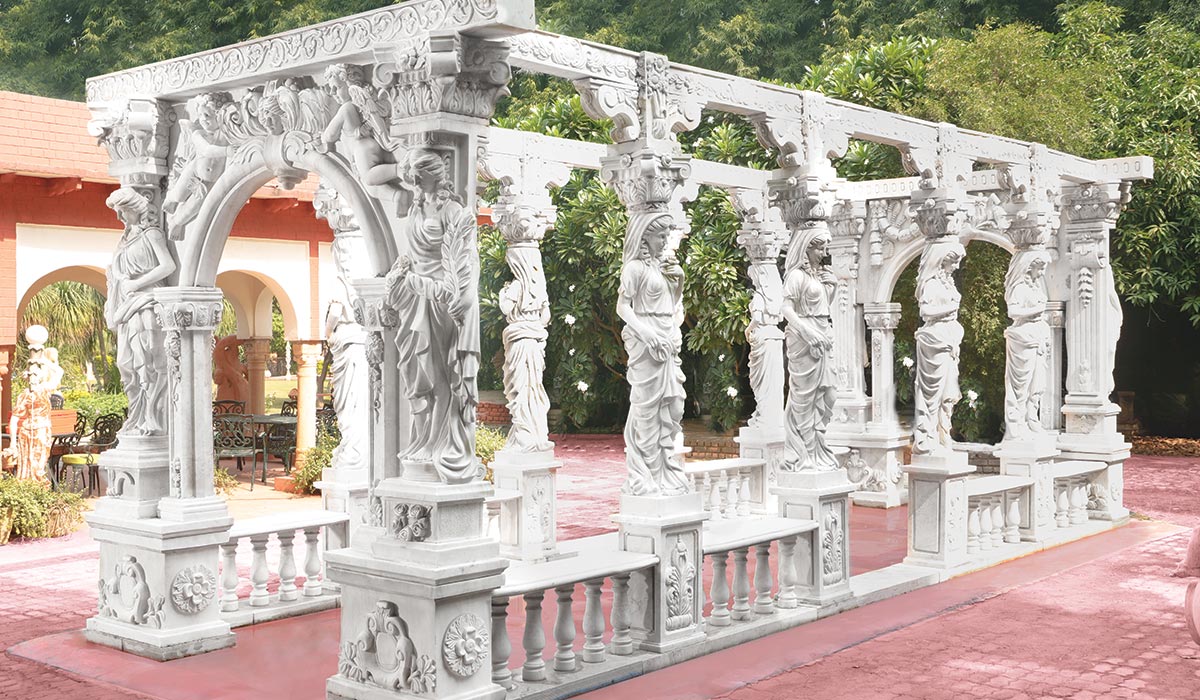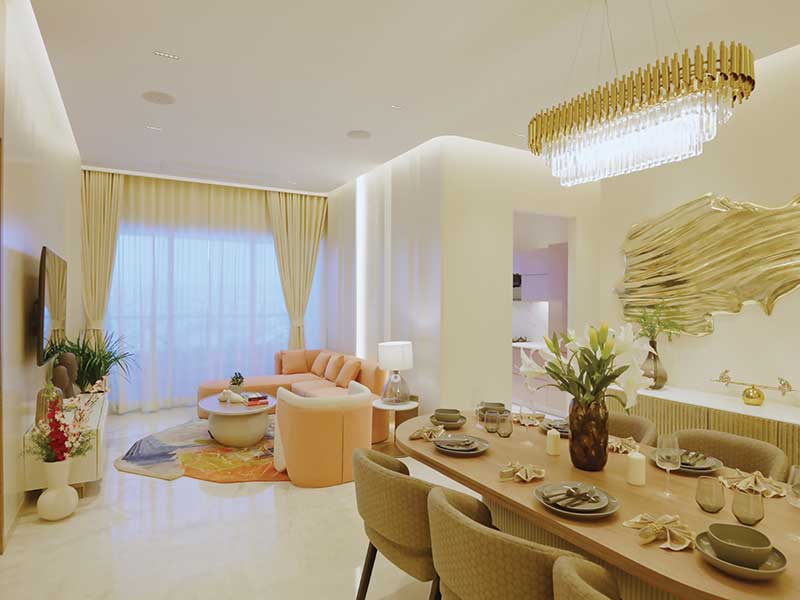Architects have always used ornamentation to enliven and inform their work. The Greeks favoured caryatids, Gothic designers embraced gargoyles, and the Art Deco era saw the rise of pyramidal motifs. With the Great Grand Gazebo, Karara Mujassme brings the charm of Europe to India.
Of pristine marble, The Great Grand Gazebo is an amalgam of artistry and exquisite design. The thought-provoking and intriguing pavilion, designed and crafted by Indian artisans, can stand the test of time and withstand the extremes of climates as well as natural disasters. It is an heirloom to be passed from one generation to the next.

The Great Grand Gazebo is the third in a series of marble gazebos created by Karara Mujassme over its 25-year history. This majestic pavilion is the largest of the three, featuring 12 columns, and boasts of detailed decorative elements. It has been crafted from Proconnesian marble sourced from Turkey and it took 5-6 artisans over two years to complete this piece of art. The entire gazebo is made from the same lot of marble; therefore, the hue of the marble is uniform throughout. The marble block was carefully selected from the mines, keeping in mind the desired colour and density. Additionally, the gazebo was carved using the age-old European technique of compass cutting.
The front and back façade of the gazebo are accentuated by detailed Romanesque arches supported on columns. The arches are adorned with carvings depicting paradisiacal scenes complete with angels. The intricately crafted caryatid marble columns and floral details add elegance and artistry to the gazebo. Each column and arch are unique and feature distinctive elements. For instance, the pavilion’s four main columns depict the four seasons—spring, summer, fall, and winter. Small slabs of marble placed between each column can be used as holders for decorative pieces, planters, or urns, and also offer a spectacular spot to sit and gaze out into the garden.









